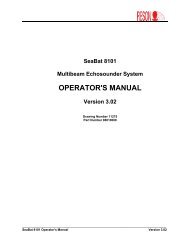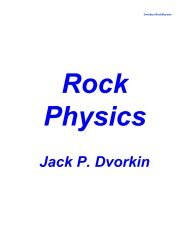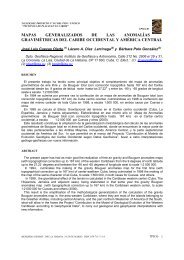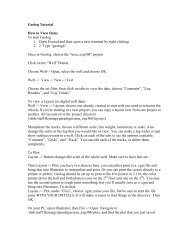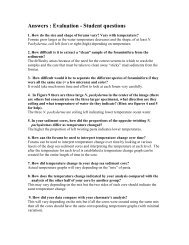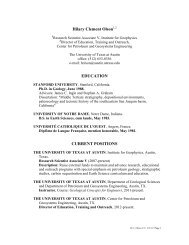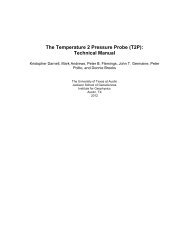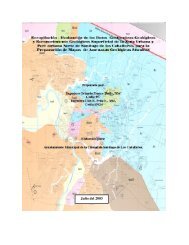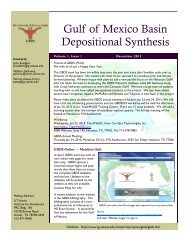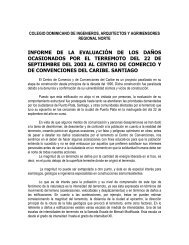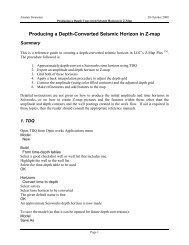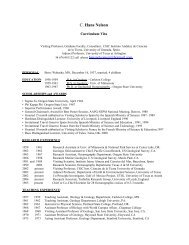INDEX I. THE P-3C VIBROCORER - GENERAL DESCRIPTION ...
INDEX I. THE P-3C VIBROCORER - GENERAL DESCRIPTION ...
INDEX I. THE P-3C VIBROCORER - GENERAL DESCRIPTION ...
Create successful ePaper yourself
Turn your PDF publications into a flip-book with our unique Google optimized e-Paper software.
P-<strong>3C</strong> MANUAL (Rev.10/99)<br />
Also, if the vessel drifts or swings on its anchor chain, the vessel will not be over the unit<br />
during the extraction of the coretube from the sediment resulting in the winch cable being<br />
off the vertical and pulling the vibrocorer sideways. This can make the recovery process<br />
very difficult. Bent coretubes, loss of coretubes and samples can be expected.<br />
Consequently it is essential that the vessel have either the ability to deploy several anchors<br />
to maintain position or, in the case of deep water coring, a good real time maneuverability.<br />
Nighttime operation: During the evening hours the working area on the deck must be well<br />
lit and with lights on top of the A-frame to cover the work area behind the stern.<br />
A-frame size and load capacity: 1. Height of A-frame ("Deck Clearance"). To determine<br />
the necessary height above the deck needed for a vibrocoring operation, use the following<br />
figure:<br />
Length of coretube + 4 ft. (1.2m)<br />
The additional 4 ft. will cover the height of the vibrohead and its lifting bridle plus the<br />
shackle and lifting eye at the end of the winch cable. (Terminal eyes are often made with<br />
three cable clamps, for a total of about 10-12 inches long that will not pass through the<br />
sheave under load). Note that we endeavored to minimize the height of the vibrohead, so we<br />
recommend to minimize the height of the terminal cable hook-up for the best use of the A-<br />
frame.<br />
This measurement is made below the sheave hanging from the A-frame. Example: If a 15 ft.<br />
core sample is needed, use a 16 ft. coretube + 4 ft., thus a total of 20 ft. working height is<br />
required. Please note that if a pivoting A-frame is used, the working height is measured not<br />
when the A-frame is vertical over the deck, but rather when it is tilting over the stern<br />
clearing the deck.<br />
2. Type of A-frame or crane: A pivoting A-frame is preferred. If a fixed A-frame is used,<br />
the vessel must provide a second winch to pull the vibrocorer aboard the vessel. If a sea<br />
crane is to be used, it must be able to work at sea with the roll of the vessel not affecting the<br />
boom's position or length and it must have its own winch, not a winch at some other<br />
location.<br />
3. Load Capacity. Both the drawworks and the winch and wire cable must be able to handle<br />
a minimum working load of 2 tons. If sand is expected, a 3 ton system should be used.<br />
4. Winch Wire Type. The steel wire cable on the vessel's winch should be of a non-rotating<br />
type. During deployment and recovery, the vibrocorer has both the winch cable and the<br />
UPC attached to it and because the winch cable has the tendency to rotate when un-spooled<br />
these two cables will become entangled. The deeper the water the more this becomes a<br />
problem.<br />
- 18 -



